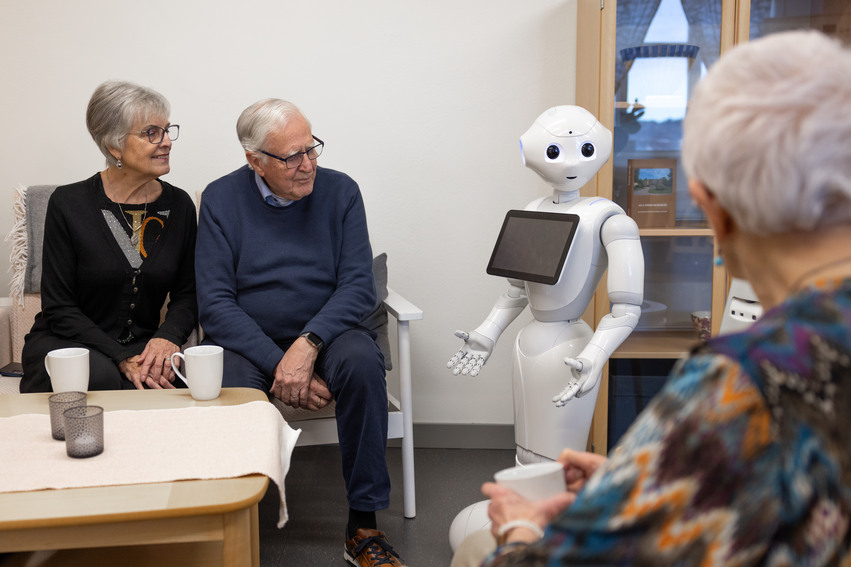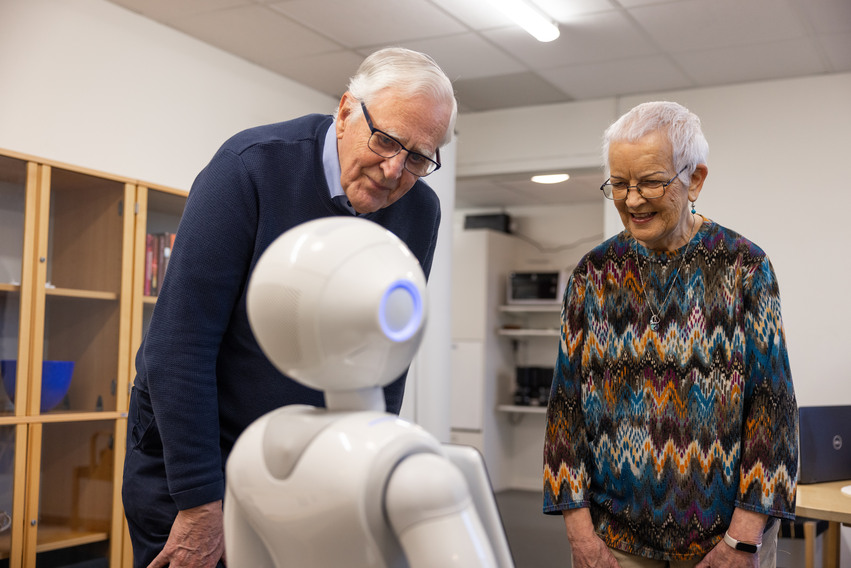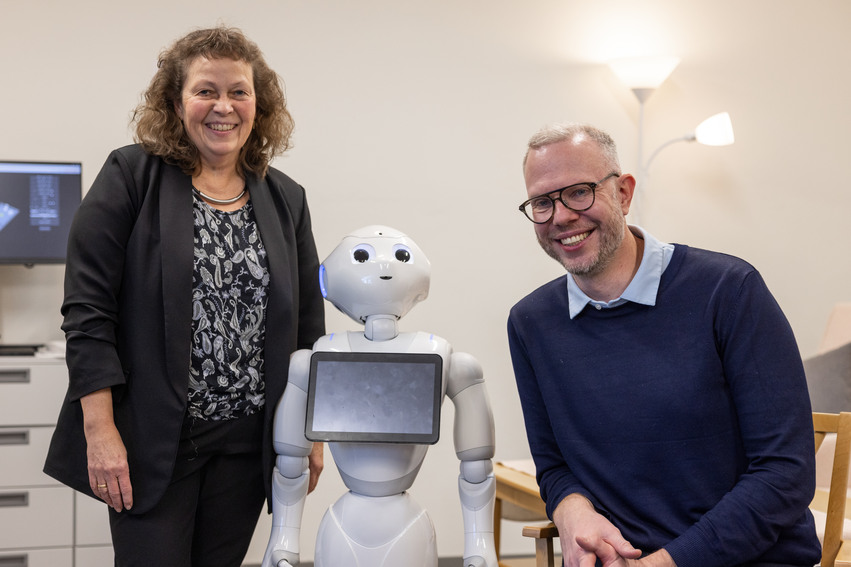
The purpose of RO-LIV is to identify the needs, solutions, and obstacles for assistive social robots that contribute to improved quality of life for older persons. The project is based on interdisciplinary collaboration between researchers in informatics and health science and aims to deliver a roadmap supporting decision-makers in the implementation of social robots in care for older persons, with a specific focus on the home environment.
What benefits can older people gain from a robot?
Assistive social robots can improve the quality of life for the elderly but are not yet widely used. The reason is that they are often designed based on developers' assumptions rather than users' needs. Researchers at the University of Skövde are now working on the RO-LIV project, where users' needs are in focus.



Catharina Gillsjö and Erik Billing are two of the researchers working on the project.
The purpose of RO-LIV is to identify the needs, solutions, and obstacles for assistive social robots that contribute to improved quality of life for older persons. The project is based on interdisciplinary collaboration between researchers in informatics and health science and aims to deliver a roadmap supporting decision-makers in the implementation of social robots in care for older persons, with a specific focus on the home environment.
Assistive social robots can serve as means to help older persons maintain social connections and reduce involuntary loneliness. Despite the existence of technological solutions, these types of robots have not yet gained widespread utility for their intended users. One reason is that most robots for older persons have been designed based on developers' assumptions, rather than being grounded in the actual characteristics and needs of the intended users. To contribute to realizing the potential that robots have, RO-LIV starts by identifying the users' needs, with older persons, caregivers, and family members as actors and co-creators.
RO-LIV begins by identifying the characteristics, needs, and contexts of older persons in their homes. It then analyzes the capabilities and limitations of existing robots based on the characteristics of the intended user groups. Subsequently, it clarifies obstacles and conditions, as well as how these can be overcome, to achieve a effective, smooth, and satisfactory integration of robots in home environments.
RO-LIV addresses the ongoing shift in provision of healthcare from institutions to homes. The project is expected to contribute new knowledge about the needs, opportunities, conditions, and obstacles for assistive social robots to enhance the quality of life for older persons. The home environment is a context where there is a significant need for digital solutions. The challenges in future healthcare and support for older persons are extensive due to demographic changes. The principle of healthy aging with home-based care emphasizes the importance of innovative solutions.
The project is a collaboration between the research environments Informatics and Digital Health Research (DHEAR). It is conducted within the collaborative platform Skaraborg Health Technology Center and involves cooperation with Skövde Municipality, Smarta Hemmet Ekedal, and pensioners’ organisations in Skövde.
Publications
2024
Proceedings of the 19th SweCog Conference
2024. Conference paper, poster.
Proceedings of the 19th SweCog Conference
2024. Conference paper, poster.






